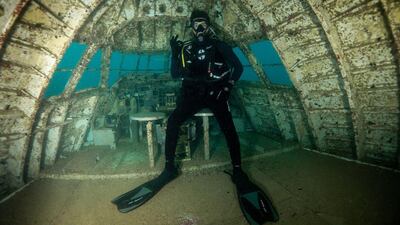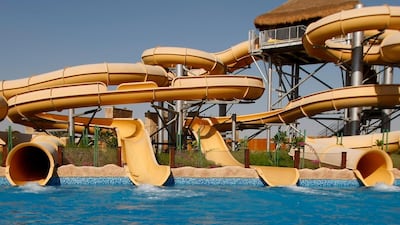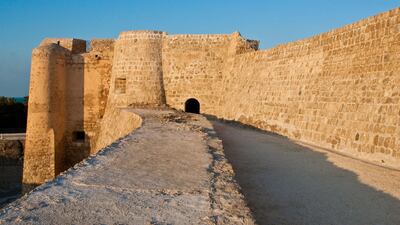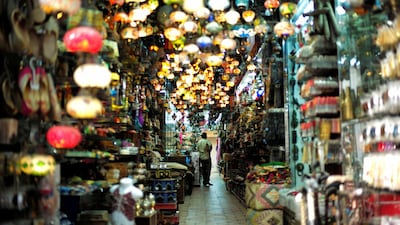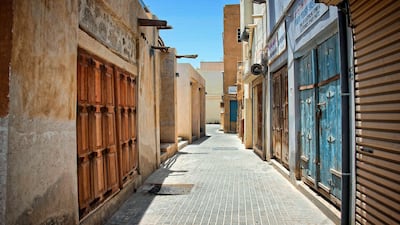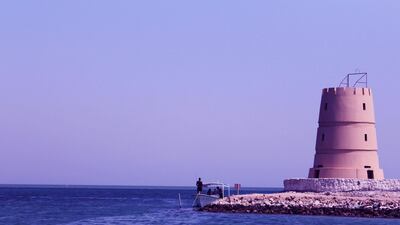Bahrain is a tiny place, but it packs a punch when it comes to tourist attractions. It's the third smallest nation in Asia with a total population of about 1.2 million and yet there are plenty of reasons to visit, particularly when you're already in the Gulf.
Here are a handful of outdoor attractions worth visiting while you're on the island.
Manama Water Garden
A new reason to head to Bahrain is Manama's Water Garden, which is undergoing an extensive revamp worth 2.5 million Bahraini dinars (Dh25m) that is set to be complete by May 2020. Spread over an area of 6.5 hectares, the new development will include a complete re-imagining of the water park that includes an abundance of green spaces, service facilities, a cafeteria, car parking and a botanical garden. It will be respectful of the park's historical and natural features and will be divided into areas for families and children, as well as offer a place for sporting activities.
The underwater theme park
This is another new addition to the island's tourist-attraction docket. Dive Bahrain is said to be the largest underwater theme park of its kind. It has a 70-metre Boeing 747 submerged at 22 metres for divers to explore, a 100,000-square-metre dive site with an artificial reef, plus plenty more to come as the eco-friendly attraction is still being built. It has, however, been open to the public since early September.
The Lost Paradise of Dilmun Water Park
If you can't wait until next year for your water park fix, then make sure you stop by The Lost Paradise of Dilmun Water Park. It's the country's biggest attraction of its kind, covering approximately 77,000 square metres and split into various areas that are all themed on the history of the Dilmun era, as Bahrain was the central location of this ancient civilisation. It's packed with fun family-friendly attractions and water slides, including Paradise River, Aqua Loop Rocket Slide and Boomerango – to name a few. There are also retail stores and a food and beverage outlets you can refuel at.
Qal'at al-Bahrain
Also known as the Bahrain Fort or Portuguese Fort, the Qal'at al-Bahrain was built in the 16th century and was inscribed onto the Unesco World Heritage List in 2005, as one of the "richest remains inventoried" of the ancient Dilmun civilisation. It comprises a 16-hectare artificial hill that has formed over time by successive occupations, a sea tower, sea channel and palm groves. There's also a modern museum with a carefully curated exhibition that shares the history of the place, as well as an ocean-facing cafe and quaint souvenir shop.
Bab Al Bahrain Souq
This is the main marketplace in Manama, where among the labyrinthine alleyways wanderers will find countless stalls selling everything from Arabian-style souvenirs to Persian rugs and myriad spices. There's a gold souq, the country's oldest mall (the Yateem Centre) and all sorts of incredible hole-in-the-wall eateries, including Bahraini favourite Haji Gahwa and vegetarian Indian spot Swagat, which isn't far from the 100-plus-years-old Shri Krishna Temple. You'll enter the souq through the famed Bab Al Bahrain arch originally designed by Sir Charles Belgrave in 1945, which has since been refurbished so it features more Islamic architectural references. Fun fact: this used to overlook the waterfront, but today the coast is nowhere near it (that's due to land reclamation).
The Pearling Path
This isn't so much of a destination in itself, but a group of cultural hotspots that form one big Unesco World Heritage Site. Pearling, Testimony of an Island Economy, also known as The Pearling Path or Pearling Trail, is the world's best preserved example of this region's pearling trade legacy. It comprises 17 buildings in the historic section of the island of Muharraq (Bahrain is an archipelago made up of 33 natural islands, the two biggest of which are Bahrain and Muharraq) that are connected by a 3.5-kilometre pathway, plus three oyster beds in the north, a segment of the coast and the Bu Mahir fortress, which can be reached via a boat taxi that leaves from the Bahrain National Museum every 30 minutes between 8am and 5pm from Wednesday to Monday. The buildings include old merchant's houses that have been turned into museums offering fascinating insights into Bahraini people and culture.
This is a map of the full Pearling Path:
Al Dar Islands
Bahrain is made up of a cluster of islands, but one of the most popular offshore spots to visit is Al Dar Islands, as it's home to a resort, bar and restaurant. You can spend the day there on the beach, enjoying activities such as pearl diving or dolphin spotting, and generally relaxing on your own tiny stretch of shore (in a hammock, if you want), or you could spend the weekend there by booking an overnight stay in a beach hut or chalet. There are often one-off events held on the island, too, so keep an eye on its schedule, especially during the cooler months. Sea taxis taking guests to the island are available every 30 minutes from Saturday to Wednesday, 9am to 8pm, and Thursday to Friday, 9am to 9pm. Make sure you take an official ID with you, as the coastguard will need to see it.
_________________
Read more:
Unesco lists Bahrain's Dilmun-era burial mounds as World Heritage Site
The Stories Studio: meet the woman in Bahrain who is making videogames that inspire positive action
The cowboys of Bahrain: inside a storied subculture
_________________
